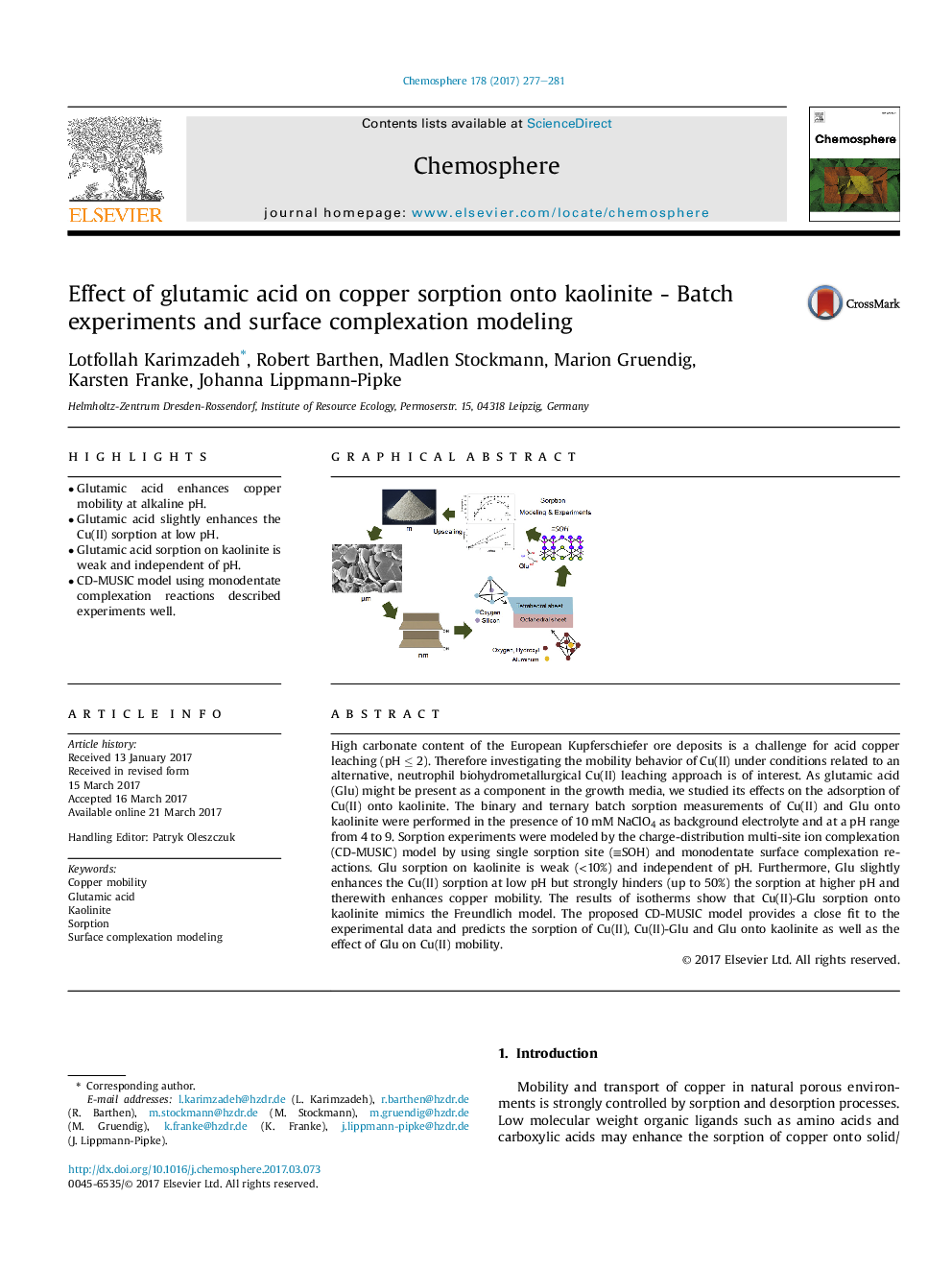| Article ID | Journal | Published Year | Pages | File Type |
|---|---|---|---|---|
| 5747265 | Chemosphere | 2017 | 5 Pages |
â¢Glutamic acid enhances copper mobility at alkaline pH.â¢Glutamic acid slightly enhances the Cu(II) sorption at low pH.â¢Glutamic acid sorption on kaolinite is weak and independent of pH.â¢CD-MUSIC model using monodentate complexation reactions described experiments well.
High carbonate content of the European Kupferschiefer ore deposits is a challenge for acid copper leaching (pH â¤Â 2). Therefore investigating the mobility behavior of Cu(II) under conditions related to an alternative, neutrophil biohydrometallurgical Cu(II) leaching approach is of interest. As glutamic acid (Glu) might be present as a component in the growth media, we studied its effects on the adsorption of Cu(II) onto kaolinite. The binary and ternary batch sorption measurements of Cu(II) and Glu onto kaolinite were performed in the presence of 10 mM NaClO4 as background electrolyte and at a pH range from 4 to 9. Sorption experiments were modeled by the charge-distribution multi-site ion complexation (CD-MUSIC) model by using single sorption site (â¡SOH) and monodentate surface complexation reactions. Glu sorption on kaolinite is weak (<10%) and independent of pH. Furthermore, Glu slightly enhances the Cu(II) sorption at low pH but strongly hinders (up to 50%) the sorption at higher pH and therewith enhances copper mobility. The results of isotherms show that Cu(II)-Glu sorption onto kaolinite mimics the Freundlich model. The proposed CD-MUSIC model provides a close fit to the experimental data and predicts the sorption of Cu(II), Cu(II)-Glu and Glu onto kaolinite as well as the effect of Glu on Cu(II) mobility.
Graphical abstractDownload high-res image (187KB)Download full-size image
